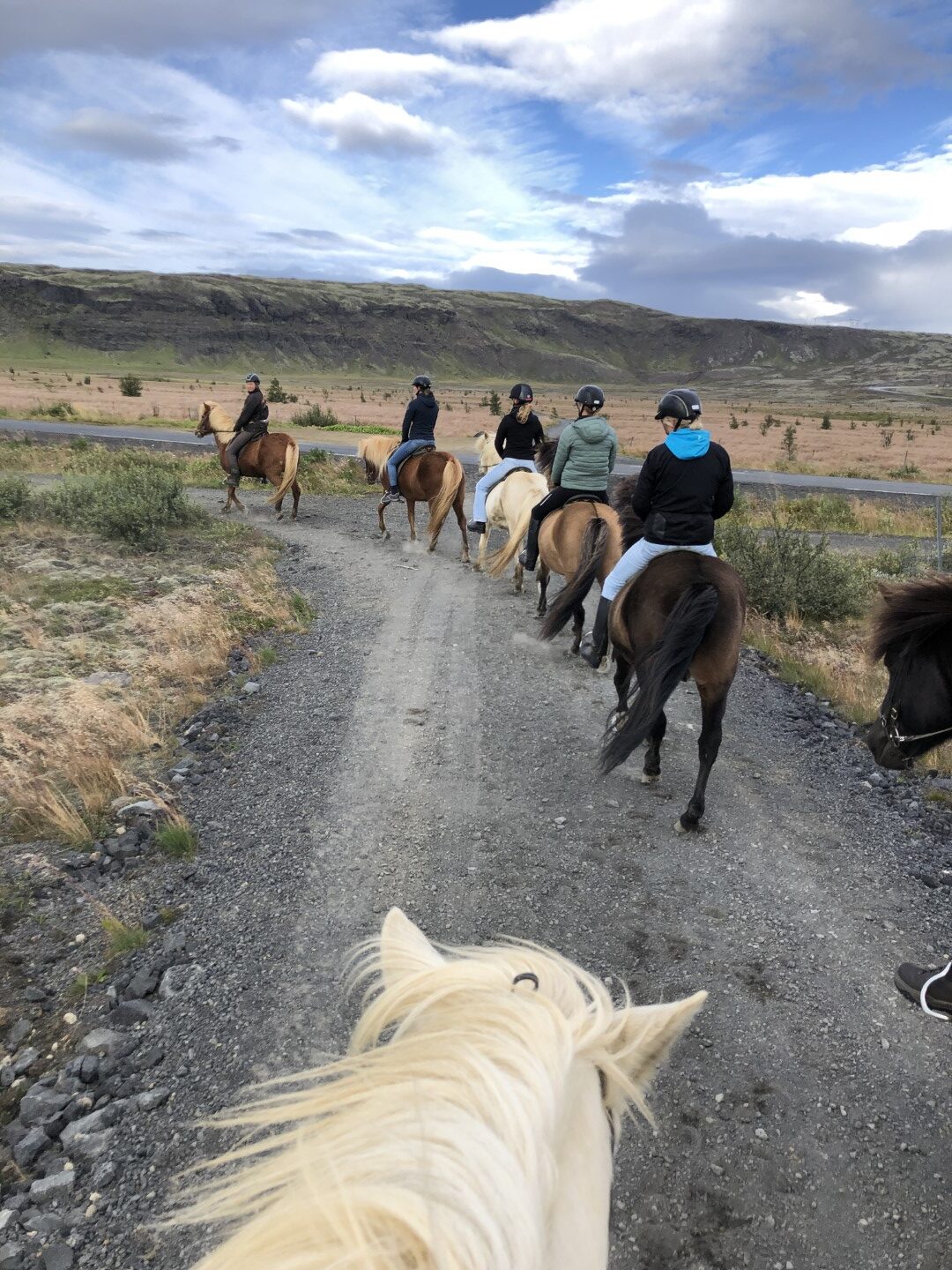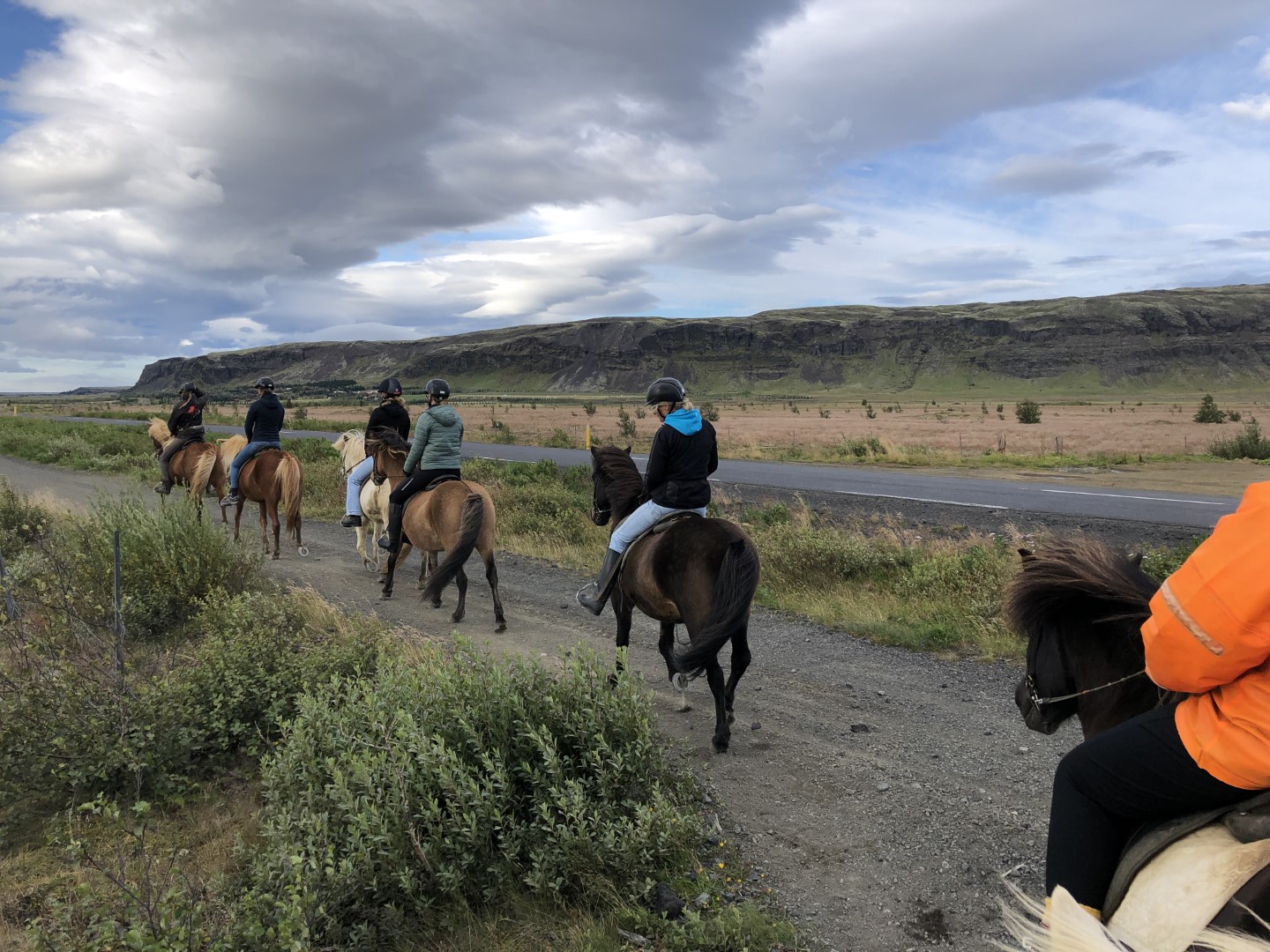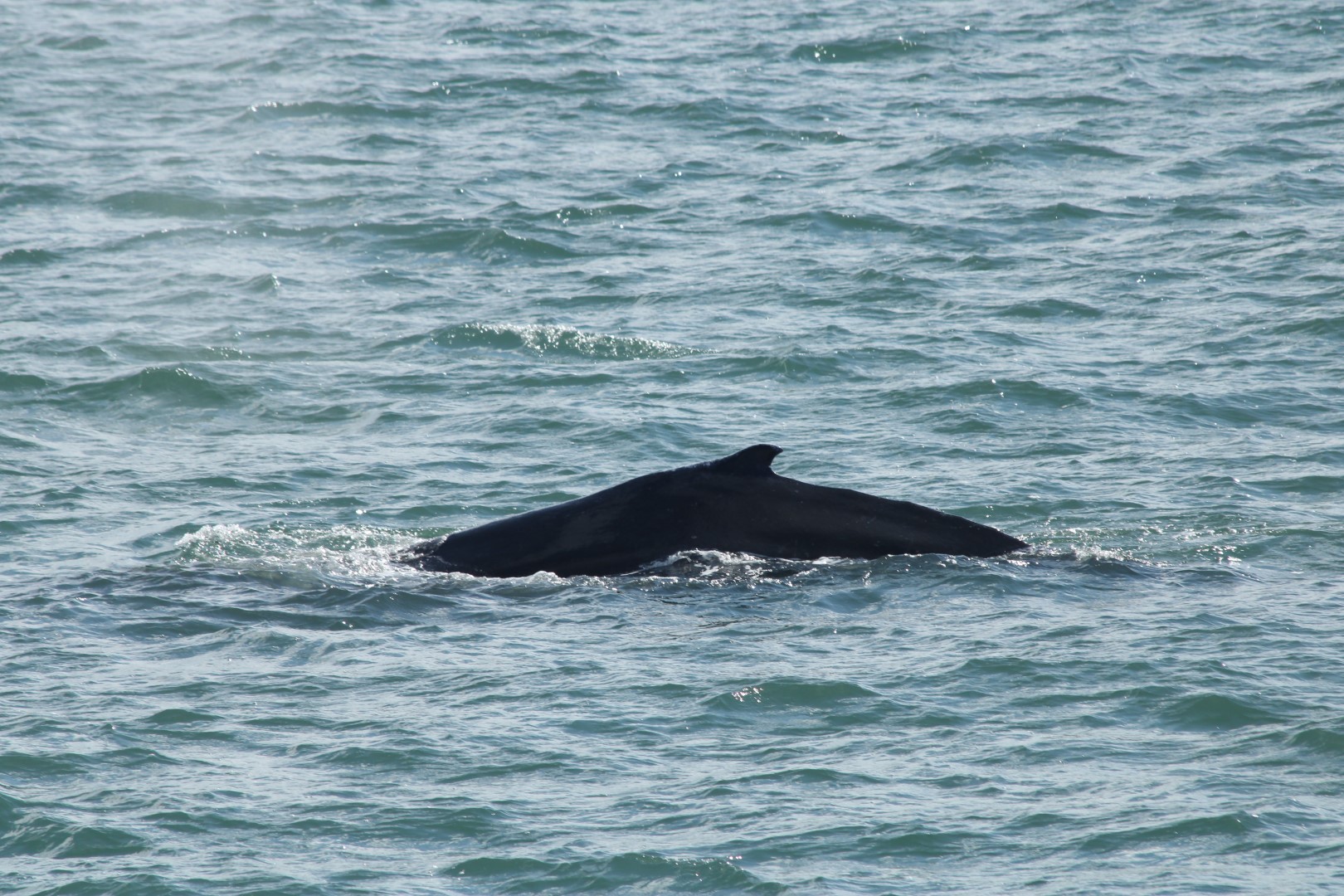Ciao a tutti! I’m sorry for the long delay, I’ve just had every day absolutely packed with activities, and no time to sit down and go through photos, let alone write about what I’ve been up to. Expect a few posts over the next few days as I scramble to catch up!
Monday the 26th was neither as cold nor as windy as the previous day, and beautifully sunny. We had reservations at Sky Lagoon, one of Iceland’s geothermal hot springs, so our local friend and guide, Dees, drove us the fifteen or so minutes from downtown Reykjavik. (We chose Sky Lagoon over Blue Lagoon partially for the location–Blue is a considerably longer drive–and partially because Blue Lagoon is situated just a little too close to the currently erupting volcano.)
You enter through changing facilities separated by ticket tier (gold or silver) and (unfortunately for a bunch of nonbinary people) gender. From there on, it’s amazing. The water is comfortably hot, with a little variation in temperature and depth at different parts of the pool. There is an astonishing view of the bay and, currently, the volcano; other bathers told me they’d seen whales breaching in the water beyond. The cool sea breeze keeps your head cool while your body stays perfectly cozy warm. There are underwater benches at varying depths where you can sit or recline, although you can’t always see them until you have stubbed your toe against one, and a warm waterfall at one end.










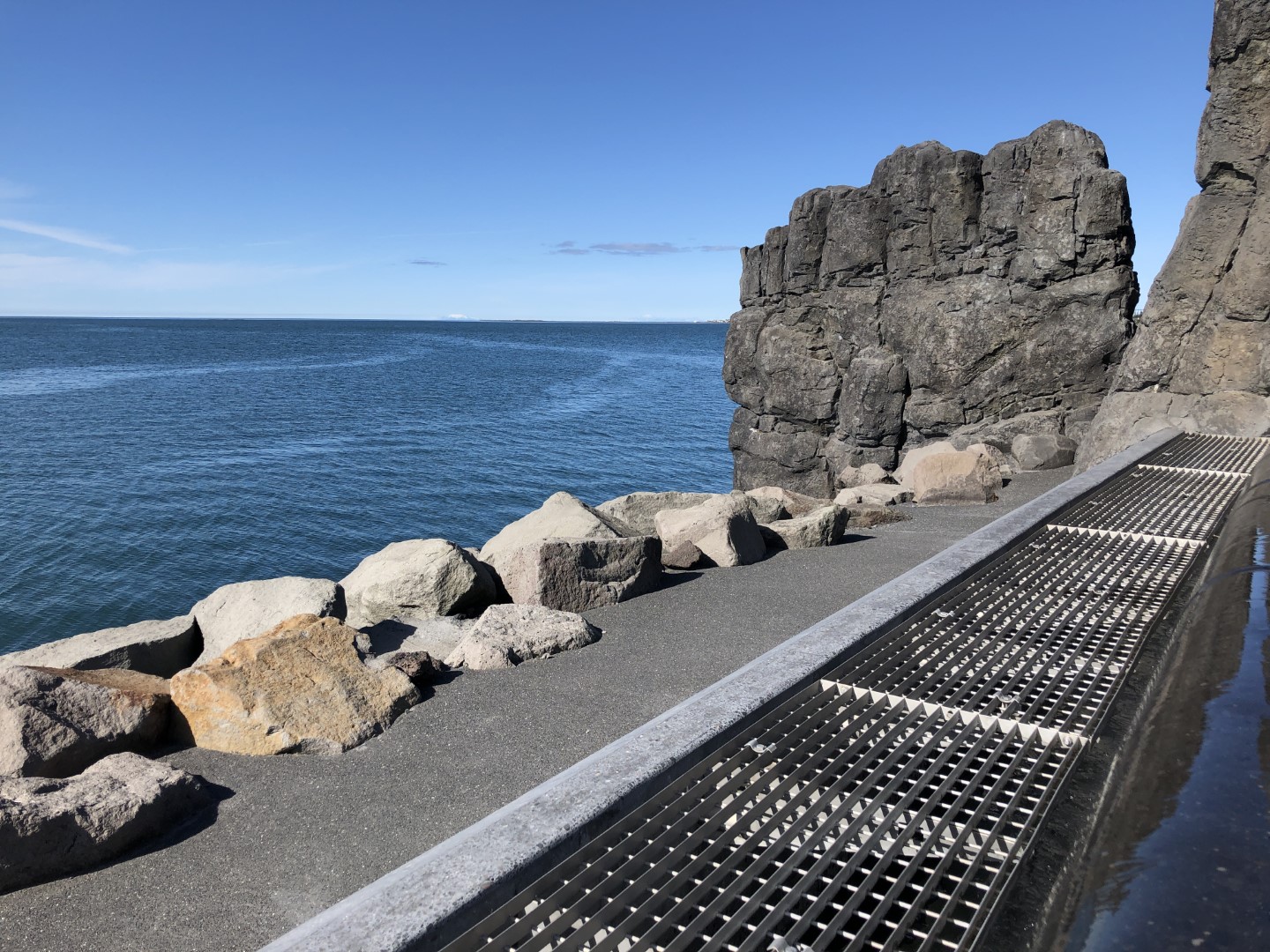

There’s even a bar accessible from the lagoon itself, with cocktails, beer, wine, cider, and nonalcoholic drinks (and free water—it’s very easy to get dehydrated since you don’t notice that you’re sweating). On entry to the lagoon, you get a wristband that you can link to your credit card in order to pay.



Guests get access to a seven-step “ritual”, which is accessed from one end of the lagoon. Each guest can partake only once, and you are encouraged to take as much time as you please to savor each step.
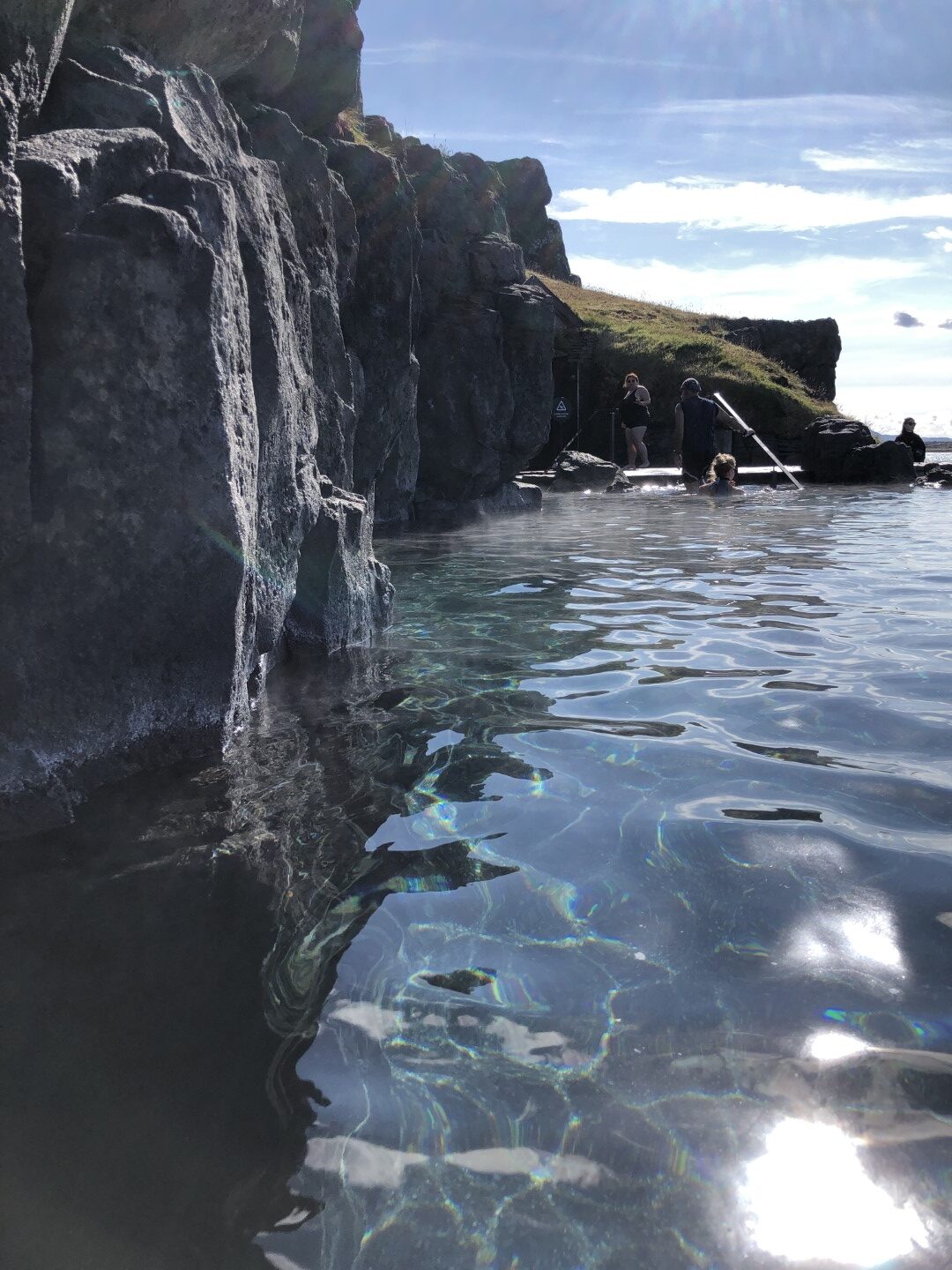
The first is a cold plunge, and I do mean cold! As soon as I was submerged up to mid-chest, I could hardly breathe, and I think I stayed in the water for about ten seconds before I had to leap out. But the reason for the cold plunge becomes clear in the next room, which was a very hot, quiet sauna. The floors were just a degree below painful to walk on, and the air felt like the inside of an oven. There was sweat absolutely pouring down my back.
After the sauna, there was a cold mist, in a room that was essentially a huge crevice in the volcanic rock. A jagged boulder was wedged in the crack above us with the blue sky visible around it. The mist was a little too cold for me once again—really, it was the floor that was too cold. I would have liked to be able to stand in the mist for a while without my feet being practically on ice.
The next step was a salt scrub in a room with a sort of slow fountain, like a stream trickling down a rocky feature in the center of the space. Attendants gave us each a bowl of sea salt with almond oil and a few other aromatic ingredients, which we took our time scrubbing all over our bodies (but not our faces, per directions).
We then had a lukewarm shower to clean off the salt, oil, and accumulated sweat (there’s not really a positive word in English for “neither hot, nor cold, but in a good way,” is there?). It felt very nice after the previous extremes—refreshing, not painfully cold, warm enough to wash away the grime, cool enough that I didn’t feel overheated. By this point, I don’t think my skin had ever felt so clean and soft!
The penultimate step was a steam room, so thick that I almost didn’t notice there were other people in it until I could see their feet as I walked past! It was tightly packed, very hot, almost hard to breathe, and once again I had rivers of sweat pouring off of me. At this point, I was wishing I’d had a lot more water to drink.
Finally, there was an “elixir”, a sort of herbal tea with crowberry juice and syrup. Crowberry, or Krækiber in Icelandic, is a plant that grows on the volcanic badlands that make up the interior of the island. The tiny shrubs grow low to the ground among mosses and other hardy plants, and the edible berries are full of big rocky seeds that Dees likened to eating gravel–but they produce deep red juice, taste something like a mix of blueberry and cranberry, and are used to make juice, syrups, liquors, and jelly.

After the ritual, we returned to the lagoon, where we lounged until evening. We got coffee and pastries at the cafe, then packed up and returned to town for dinner and a view of Hallgrímskirkja at sunset–which you’ll see next post.
See you soon!









































